Home>Dining>Tableware>What Is The Value Of Sterling Silverware
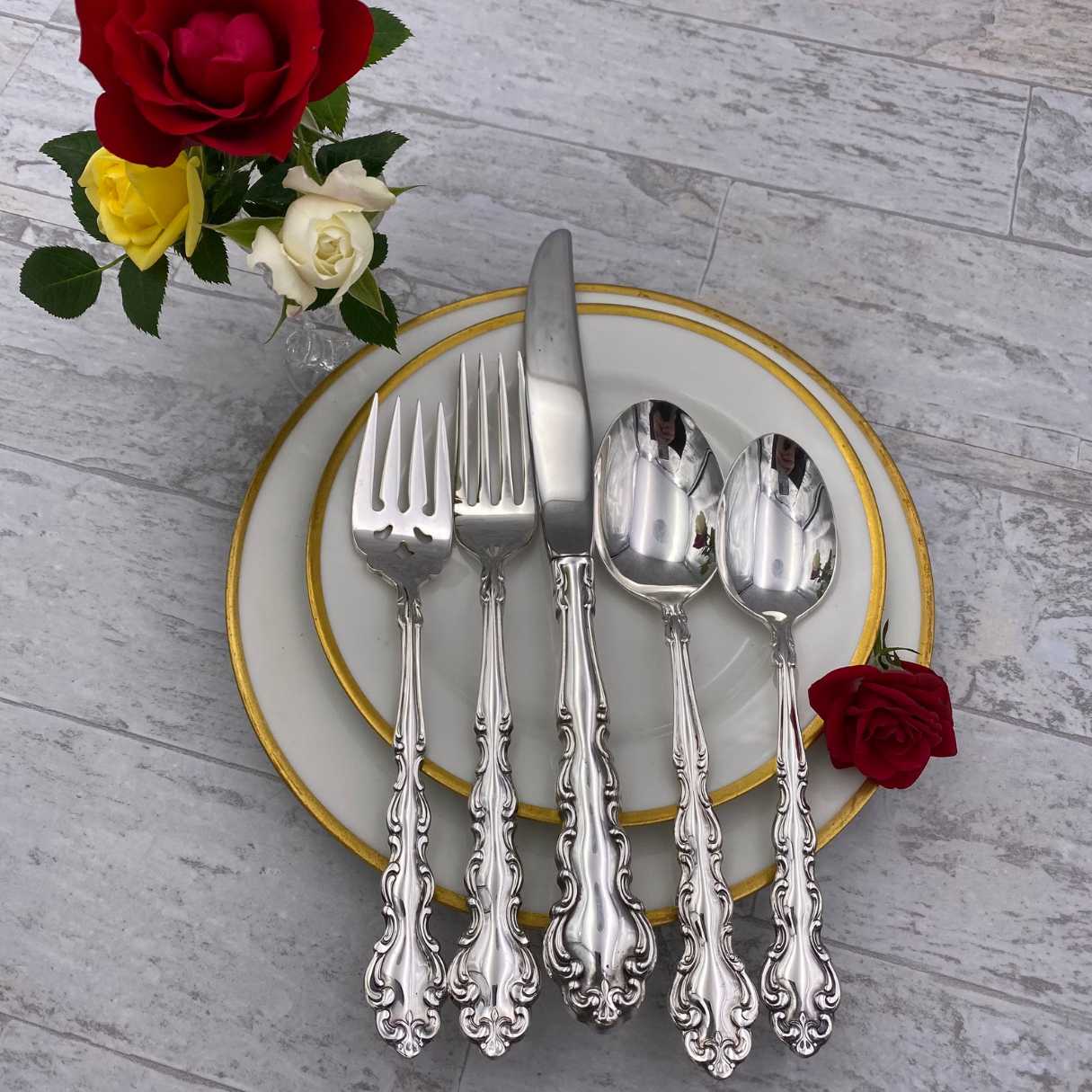

Tableware
What Is The Value Of Sterling Silverware
Modified: March 2, 2024
Discover the value of sterling silverware and tableware. Find out what your pieces are worth and how to determine their true market price.
(Many of the links in this article redirect to a specific reviewed product. Your purchase of these products through affiliate links helps to generate commission for Storables.com, at no extra cost. Learn more)
Introduction
Welcome to the fascinating world of sterling silverware! Whether you have inherited a collection from a loved one or are simply curious about the value of these elegant pieces, understanding how to determine their worth is a valuable skill. Sterling silverware holds a timeless beauty and has been cherished for centuries, making it not only aesthetically pleasing but also historically significant.
But what exactly is sterling silverware? Sterling silver refers to a type of silver alloy that contains 92.5% pure silver and 7.5% other metals, usually copper. This combination provides strength and durability while maintaining the distinctive silver color and luster. Sterling silverware includes a wide range of items, such as flatware, serving utensils, tea sets, and decorative objects, all crafted from this exquisite material.
The worth of sterling silverware is influenced by various factors, each contributing to its overall value. These factors include historical significance, market demand, collectibility, condition, quality, and the presence of hallmarks or signatures. Understanding these elements will not only help you determine the worth of your sterling silverware but also appreciate the craftsmanship and rich history behind each piece.
In this article, we will delve into each of these factors in detail, providing you with valuable insights to assess the worth of your sterling silverware. So, let’s embark on this journey to uncover the hidden treasures and stories that lie within these exquisite pieces!
Key Takeaways:
- Understanding the worth of sterling silverware involves considering historical value, market demand, collectibility, condition, quality, hallmarks, and signatures. Each factor contributes to the overall value and desirability of these exquisite pieces.
- While determining the monetary value of sterling silverware is important, it’s equally crucial to appreciate the historical significance, craftsmanship, and cultural heritage that these pieces embody. Their worth extends beyond mere monetary value, enriching our lives with elegance and history.
Read more: What Is Silverware Made Of
Definition of Sterling Silverware
Sterling silverware is a term used to describe items made from sterling silver, a precious metal alloy. As mentioned earlier, sterling silver consists of 92.5% pure silver and 7.5% other metals, usually copper. This specific composition gives sterling silverware its strength and durability, while still maintaining the beauty and elegance of silver.
Common examples of sterling silverware include flatware (such as spoons, forks, and knives), serving utensils, tea sets, trays, candle holders, and various decorative objects. These pieces are often intricately designed and handcrafted, reflecting the skill and artistry of their makers.
Unlike silver-plated items, where a thin layer of silver is applied to a base metal, sterling silverware is solid silver throughout. This distinction contributes significantly to its value and desirability in the market.
It’s important to note that not all silver-colored items are made of sterling silver. Other silver alloys, such as silver nickel and silver plate, may have a similar appearance but do not possess the same silver content or value as sterling silverware.
When purchasing or evaluating sterling silverware, you’ll often come across specific terms related to its composition. Here are a few common ones to be familiar with:
- 925 Sterling Silver: This term denotes that the item is made from sterling silver. The number “925” reflects the silver’s purity percentage of 92.5%.
- Sterling: This term is sometimes used as an informal abbreviation for sterling silver. It indicates that the item is made from the sterling silver alloy.
- Hallmarked Sterling Silver: Sterling silverware often bears a hallmark, a series of specific marks or symbols that indicate its authenticity, purity, and origin. Hallmarks are usually found on the underside or handle of the item.
Now that we have a clear understanding of what sterling silverware is, let’s explore the various factors that determine its worth.
Factors that Determine the Worth of Sterling Silverware
When determining the worth of sterling silverware, several key factors come into play. These factors not only affect the monetary value of the pieces but also contribute to their historical significance and desirability among collectors. Let’s examine these factors in detail:
- Historical Value: Sterling silverware pieces that have a rich historical background or are associated with a significant event or era tend to hold greater worth. For example, silverware crafted during a particular period, such as the Victorian era or the Art Deco period, may be highly sought after by collectors and enthusiasts.
- Market Demand: The demand for specific types of sterling silverware can fluctuate over time, affecting their worth. Rare or unique pieces that are in high demand among collectors or have become trendy can command a higher price. Factors that influence market demand include current fashion trends, changes in lifestyle preferences, and cultural influences.
- Collectibility and Rarity: The rarity and collectibility of a particular sterling silverware set or item can significantly impact its value. Limited production runs, discontinued patterns, or pieces from renowned silversmiths or manufacturers often fetch higher prices due to their scarcity.
- Condition and Quality: The condition of the sterling silverware plays a crucial role in determining its worth. Pieces in excellent condition with minimal wear, tarnish, or damage are more valuable than those in poor condition. Marks, scratches, dents, or repairs can affect the overall value. The quality of the craftsmanship, including the level of detail, intricacy, and finesse, also contributes to the worth of the silverware.
- Hallmarks and Signatures: Hallmarks, which are marks or symbols stamped onto the silverware, indicate its authenticity, purity, and origin. These hallmarks can provide valuable information about the age, maker, and quality of the piece, influencing its worth. Additionally, pieces with signatures or marks from renowned silversmiths or manufacturers are often highly sought after and command higher prices.
- Current Market Prices: The current market prices of silver and silverware also play a significant role in determining their worth. Silver prices can fluctuate due to various economic factors, and this, in turn, can affect the value of sterling silverware. It’s important to stay updated with current market prices to have a better understanding of the worth of your silverware.
By considering these factors, you can assess the worth of your sterling silverware with greater accuracy. While monetary value is essential, it’s equally important to appreciate the historical, artistic, and cultural significance of these cherished pieces. Now that we have explored the factors that influence the worth of sterling silverware, let’s uncover the historical value associated with these exquisite pieces in the next section.
Historical Value of Sterling Silverware
Sterling silverware holds a significant historical value due to its rich past and association with different periods, cultures, and events. These pieces offer a glimpse into the social, cultural, and artistic influences of bygone eras. Let’s delve into the historical value of sterling silverware:
1. Cultural Significance: Sterling silverware reflects the traditions and customs of various cultures throughout history. Different regions and countries have their unique styles and designs, showcasing their artistic heritage. For example, British sterling silverware often features intricate floral motifs and elaborate handles, reflecting the Victorian era’s romantic aesthetic.
2. Symbol of Status and Wealth: Sterling silverware was historically associated with wealth and social status. Owning silverware and using it during elaborate dining occasions was a symbol of refinement, sophistication, and luxury. The display of silverware on dining tables was a way to showcase one’s wealth and social standing.
3. Commemorative Pieces: Sterling silverware has often been commissioned for commemorative purposes, honoring special events or prominent individuals. For example, silverware sets crafted to mark royal weddings, coronations, or historical milestones hold immense significance. These pieces not only serve as reminders of significant moments but also represent the craftsmanship and artistic expression of the time.
4. Historical Silversmiths and Manufacturers: Many silversmiths and manufacturers throughout history have gained prominence for their exceptional skill and craftsmanship. Pieces crafted by renowned makers, such as Paul Revere in the United States or Paul Storr in England, hold a particular historical value. The names of these craftsmen have become synonymous with exquisite silverware, and their pieces are highly sought after by collectors.
5. Documenting Artistic Styles and Trends: Sterling silverware provides a visual record of the artistic styles and trends prevalent during different periods. From the intricate Rococo designs of the 18th century to the sleek and geometric Art Deco patterns of the 1920s, each style encapsulates the aesthetic preferences and influences of its time. These pieces serve as a connection to the art and design movements of the past.
6. Preservation of Craftsmanship: Sterling silverware showcases the mastery of traditional silverwork techniques that have been passed down through generations. The creation of these pieces involves skills such as engraving, chasing, and repoussé, which require precision and expertise. The historical value lies in preserving and appreciating these traditional crafts and supporting artisans who continue to practice these techniques.
By understanding the historical value associated with sterling silverware, we gain a deeper appreciation for these exquisite pieces as more than just functional tableware. They are precious artifacts that encapsulate the cultural, social, and artistic heritage of the past. In the next section, we’ll explore the market value of sterling silverware and factors that impact its worth in today’s market.
Market Value of Sterling Silverware
The market value of sterling silverware is influenced by various factors, including current market trends, supply and demand, and the perceived worth of specific pieces. Understanding these factors will help you gauge the potential value of your silverware in the market. Let’s delve into the market value of sterling silverware:
1. Silver Market Prices: The price of silver is a significant factor in determining the market value of sterling silverware. The silver market is subject to fluctuations due to global economic conditions, supply and demand dynamics, and investor sentiment. Keep in mind that the value of sterling silverware is not solely based on the weight of the silver it contains; other factors, such as craftsmanship and rarity, also contribute to its worth. However, higher silver prices generally have a positive impact on the value of silverware.
2. Supply and Demand: Like any other collectible or antique item, the supply and demand of sterling silverware play a pivotal role in its market value. Items that are scarce or in high demand among collectors and enthusiasts tend to command higher prices. Conversely, if there is a plentiful supply of a particular pattern or style, its market value may be lower. Factors such as fashion trends, changes in taste, and cultural influences can impact the demand for specific types of silverware.
3. Rarity and Collectibility: The rarity and collectibility of sterling silverware significantly impact its market value. Limited production runs, discontinued patterns, or pieces from renowned silversmiths or manufacturers are often more desirable among collectors, driving up their value. Additionally, pieces with unique or distinctive features, such as an unusual design or an uncommon use, can fetch higher prices due to their rarity.
4. Condition and Quality: The condition and quality of the sterling silverware play a crucial role in determining its market value. Pieces in excellent condition, with minimal wear, scratches, or damage, are more desirable to collectors and can command higher prices. Silverware with exceptional craftsmanship, intricate details, and superior quality is also highly sought after in the market.
5. Brand or Maker: The reputation and pedigree of the silversmith or manufacturer can impact the market value of sterling silverware. Pieces crafted by well-known makers or prestigious silver manufacturers often carry a premium due to their association with quality and craftsmanship. Collectors and buyers may specifically seek out silverware from certain brands or makers, increasing its value in the market.
6. Market Trends and Preferences: Market trends and consumer preferences can have a significant influence on the value of sterling silverware. For example, there might be a surge in demand for vintage silverware or a shift in popularity towards specific styles or patterns. Keeping an eye on market trends and understanding current preferences can help you gauge the potential value of your silverware.
It’s important to note that the market value of sterling silverware can fluctuate over time. While some pieces may experience an increase in value, others may see a decline. Factors such as changes in taste, economic conditions, and shifts in the antique and collectible market can all impact the market value of sterling silverware.
By considering these factors and staying informed about current market trends, you can have a better understanding of the potential value of your sterling silverware. In the next section, we’ll explore the role of collectibility and rarity in determining the worth of these exquisite pieces.
When determining the value of sterling silverware, consider factors such as the weight of the silver, the maker’s mark, and the current market demand for antique or vintage pieces. You can also consult with a reputable appraiser for a professional valuation.
Read more: What Is The Value Of A Tiffany Lamp
Collectibility and Rarity of Sterling Silverware
The collectibility and rarity of sterling silverware significantly impact its worth and desirability among collectors and enthusiasts. The scarcity of certain patterns, designs, or makers can elevate the market value of these exquisite pieces. Let’s delve into how collectibility and rarity influence the worth of sterling silverware:
1. Limited Production Runs: Sterling silverware that was produced in limited quantities tends to be more collectible and valuable. Manufacturers may release specific patterns or sets for a limited period or in limited numbers, making them rarer and more sought after by collectors. Limited production runs contribute to the exclusivity and scarcity of the silverware, driving up its collectibility and market value.
2. Discontinued Patterns: Sterling silverware patterns that are no longer in production can hold significant collectible value. When a pattern ceases to be produced, the existing pieces become increasingly rare over time. Collectors often seek out discontinued patterns to complete or augment their collections, increasing the demand and value of these silverware sets.
3. Renowned Silversmiths and Manufacturers: Silverware crafted by well-known silversmiths or manufacturers often carries a higher collectibility value. Renowned makers, such as Tiffany & Co., Georg Jensen, or Gorham, have established reputations for producing exceptional silverware. Pieces bearing the mark of these prestigious makers are highly sought after by collectors, thereby increasing their rarity and worth.
4. Unique or Uncommon Designs: Sterling silverware pieces with unique or uncommon designs can be highly collectible. Silverware with distinctive features, unusual shapes, or intricate craftsmanship sets them apart from more common patterns, making them rare and desirable. Collectors value the uniqueness and individuality of these pieces, often leading to increased market demand and higher prices.
5. Historical Significance: Sterling silverware with historical significance often holds a higher level of collectibility. Pieces associated with famous events, important figures, or significant periods can become cherished collectibles. For example, silverware from special occasions like royal weddings, historical milestones, or commemorative sets can be highly sought after by collectors interested in preserving historic artifacts.
6. Documentation and Provenance: Having proper documentation and provenance can enhance the collectibility and value of sterling silverware. Records that authenticate the origin, history, and ownership of a piece can provide assurance to buyers and collectors. Provenance adds a layer of credibility and establishes the lineage of silverware, increasing its desirability among collectors.
It’s important to note that while collectibility and rarity play a significant role in determining the worth of sterling silverware, its value is still subjective and influenced by individual preferences and market dynamics. What one collector may perceive as valuable and collectible, another might not. Additionally, market demand and trends can shift over time, affecting the value of certain silverware pieces.
By understanding the factors that contribute to the collectibility and rarity of sterling silverware, you can better assess the worth and desirability of your pieces. In the next section, we’ll explore the impact of condition and quality on the value of sterling silverware.
Condition and Quality of Sterling Silverware
The condition and quality of sterling silverware play a crucial role in determining its value and desirability among collectors and buyers. The condition refers to the overall state of the silverware, while quality encompasses the craftsmanship, design, and materials used. Let’s explore how condition and quality impact the worth of sterling silverware:
1. Condition: The condition of sterling silverware is a significant factor in determining its value. Pieces in excellent condition, with minimal wear, scratches, or damage, are generally more desirable and can command higher prices. Buyers and collectors are often willing to pay more for silverware that is well-preserved and in its original state. Signs of poor condition, such as tarnish, dents, or repairs, can diminish the value of the piece.
2. Tarnish and Patina: Tarnish, which occurs naturally over time when silver reacts with sulfur in the air, is common on sterling silverware. While minor tarnish can be easily remedied, heavy or extensive tarnish can affect the value. Some collectors, however, appreciate a certain level of tarnish, as it can add a desirable patina and a sense of authenticity to older pieces. It’s important to strike a balance between maintaining the silverware’s original beauty and preserving its historical character.
3. Wear and Usage: The level of wear and usage of sterling silverware can impact its value. Pieces that have been heavily used, with significant signs of wear such as worn handles or faded engravings, may be less valuable. Conversely, silverware that has been carefully preserved or gently used over the years can retain more of its original value. Light usage and minimal wear suggest that the piece has been well-cared for and may indicate higher quality.
4. Craftsmanship and Design: The quality of craftsmanship and design is another critical aspect in determining the worth of silverware. Sterling silverware that exhibits exceptional artistry, intricate details, and fine workmanship is highly coveted by collectors. The level of precision, attention to detail, and innovation in design contribute to the quality of the piece. Silverware crafted by renowned silversmiths or esteemed manufacturers often holds greater value due to their reputation for excellence.
5. Weight and Composition: The weight of sterling silverware can also impact its value. Heavier pieces often indicate a higher silver content, which can be desirable for collectors and buyers. Additionally, the composition of the silver alloy, with 92.5% pure silver, contributes to the value and authenticity of sterling silverware. It’s important to note that pieces labeled as “weighted” or “reinforced” may have added materials, such as a base metal, which can affect their value.
6. Hallmarks and Maker’s Marks: The presence of hallmarks and maker’s marks is an important indicator of quality and authenticity. Hallmarks are stamped symbols that indicate the purity, origin, and year of production of the silverware. Maker’s marks identify the specific silversmith or manufacturer responsible for creating the piece. Sterling silverware with well-documented hallmarks and recognized maker’s marks can enhance its value and authenticity.
When assessing the worth of sterling silverware, it’s important to consider both the condition and quality of the pieces. While condition can be subject to wear and age, quality reflects the craftsmanship and materials used in creating the silverware. By understanding these factors, you can confidently appraise and appreciate the value of your sterling silverware.
In the next section, we’ll explore the significance and role of hallmarks and signatures on sterling silverware when determining its worth.
Hallmarks and Signatures on Sterling Silverware
Hallmarks and signatures play a significant role in determining the authenticity, origin, and quality of sterling silverware. These marks provide valuable information that helps collectors, buyers, and appraisers assess the worth and provenance of the silverware. Let’s explore the significance and role of hallmarks and signatures:
Hallmarks: Hallmarks are a set of marks or symbols stamped onto the silverware. They serve as a form of identification and authentication, providing key information about the silver’s purity, origin, and date of production. Here are some common elements found in hallmarks:
- Standard Mark: The standard mark indicates the silver content of the piece. In the case of sterling silverware, the standard mark symbol consists of the number “925” or the word “Sterling” to signify that it contains 92.5% pure silver.
- Assay Office Mark: The assay office mark represents the authority responsible for testing and hallmarking the silverware. Different countries have their specific assay office marks. For example, the lion passant is the assay office mark for British sterling silver.
- Date Letter: The date letter is a mark that indicates the year of production or assay of the silverware. Each year, a different letter or symbol is used, allowing for the identification of the piece’s age.
- Maker’s Mark: The maker’s mark identifies the silversmith or manufacturer responsible for crafting the silverware. These marks are unique to each maker and offer valuable insight into the piece’s origin and craftsmanship.
Hallmarks are typically found on specific areas of the silverware, such as the back of spoons, the base of candlesticks, or the handles of knives. These marks may be small and discreet, requiring close inspection or the use of a magnifying glass to identify and decipher.
Signatures: In addition to hallmarks, some sterling silverware may bear signatures or marks from renowned silversmiths, designers, or manufacturers. These signatures can be engraved, embossed, or stamped onto the piece and add a layer of desirability and collectibility. Collectors often seek out silverware with signatures from well-known makers or influential designers, as they represent the highest level of craftsmanship and artistry.
The presence of authentic hallmarks and signatures on sterling silverware adds to its value and authenticity. It provides assurance that the piece is genuine, made from high-quality silver, and crafted by a recognized silversmith or manufacturer. When evaluating the worth of silverware, collectors and appraisers take into account the presence and identification of these marks to determine its historical and monetary significance.
It’s essential to note that not all silverware may have visible hallmarks or signatures. Some older or heavily used pieces may have worn or obscured marks, making identification challenging. In such cases, consulting with experts or professional appraisers can help authenticate and assess the worth of the silverware.
By understanding the significance and role of hallmarks and signatures, you can confidently evaluate the authenticity and value of your sterling silverware. In the next section, we’ll explore how you can determine the worth of your silverware through various methods and considerations.
How to Determine the Worth of Your Sterling Silverware
Determining the worth of your sterling silverware requires careful assessment and consideration of various factors. By following these steps, you can gain a better understanding of the value of your pieces:
1. Research: Start by conducting thorough research on your silverware. Identify the maker, pattern, and any historical or significant information about the pieces. Look for similar items online, in antique stores, or at auctions to get an idea of their market value. Collect reference materials and consult reputable silverware guides to deepen your knowledge.
2. Examine the Condition: Carefully inspect the condition of your silverware. Look for any scratches, dents, repairs, or tarnish. Assess the overall wear and usage, as well as the level of preservation. Take note of any damage or restoration that may affect the value of the pieces.
3. Determine the Silver Content: Check for hallmarks on your silverware, such as the standard mark indicating the silver content. Sterling silverware should have a mark of “925” or “Sterling” to signify that it contains 92.5% pure silver. If the silverware is silver-plated or made from a different silver alloy, its value will differ from that of sterling silverware.
4. Identify Hallmarks and Signatures: Look for hallmarks or maker’s marks on your silverware. Use a magnifying glass to read and decipher the marks and identify the silversmith or manufacturer. Refer to reference books or online databases to determine the significance and reputation of the makers.
5. Consider Rarity and Collectibility: Assess the rarity and collectibility of your silverware. Determine if the pattern is discontinued or if it’s from a limited-production run. Research if the maker or designer is highly sought after by collectors. A rarer or more collectible piece will generally have a higher value in the market.
6. Evaluate the Quality: Examine the craftsmanship, design, and materials used in your silverware. Consider the level of detail, intricacy, and overall quality of the pieces. Higher-quality silverware, with superior artistry and craftsmanship, often commands a higher value among collectors and buyers.
7. Seek Professional Appraisal: Consider consulting a professional appraiser who specializes in silverware. An appraiser will have the expertise and knowledge to assess the value of your silverware accurately. They will consider all the factors mentioned above, taking into account current market trends, condition, rarity, and historical significance.
8. Monitor the Market: Keep an eye on the market trends and prices of sterling silverware. The value of silver and collectibles can fluctuate over time due to various factors. By staying informed, you can have a better understanding of the potential worth of your silverware and make more informed decisions about buying, selling, or preserving your collection.
Remember, determining the worth of sterling silverware is not an exact science, and values can vary based on individual preferences and market dynamics. It’s important to approach the process with a realistic mindset and consider all relevant factors to assess the value accurately.
By following these steps and considering the condition, hallmarks, rarity, quality, and market trends, you can gain a better understanding of the worth of your sterling silverware collection. Whether for investment purposes, insurance claims, or personal curiosity, this knowledge will enable you to appreciate the significance and value of these cherished pieces.
Finally, it’s crucial to note that while assessing the worth of sterling silverware is valuable, these beautiful pieces hold their own history, artistry, and sentimental value that cannot be merely measured in monetary terms. Their beauty and craftsmanship add elegance and charm to any table setting or display, making them treasured heirlooms for generations to come.
Read more: What Is Community Silverware Made Of
Conclusion
Sterling silverware holds a timeless beauty and historical significance that fascinates collectors, enthusiasts, and those intrigued by its allure. Understanding the worth of sterling silverware requires careful examination and consideration of various factors, including historical value, market demand, collectibility, condition, quality, hallmarks, and signatures. Each of these elements contributes to the overall value and desirability of these exquisite pieces.
By delving into the historical value of sterling silverware, we discovered how these pieces offer glimpses into different eras, cultures, and artistic styles. As symbols of status and wealth, they have adorned tables and celebrated special events throughout history, making them significant artifacts of human craftsmanship and creativity.
The market value of sterling silverware is influenced by current market prices, supply and demand dynamics, and the intrinsic qualities of the pieces themselves. Understanding the collectibility and rarity of specific patterns, makers, or designs allows us to appreciate the unique qualities that make silverware highly sought after by collectors.
The condition and quality of sterling silverware are essential factors in determining its value. Pieces in excellent condition, exhibiting superior craftsmanship and design, carry a higher worth. The presence of hallmarks and signatures solidifies the authenticity, origin, and provenance of the silverware, providing valuable insights into its age and reputation.
In the quest to determine the worth of sterling silverware, research, evaluation, and professional appraisal are valuable tools. However, it’s important to remember that the worth of these pieces extends beyond their monetary value. They carry stories, traditions, and a rich cultural heritage. Their presence on tables or displayed in collections provides a tangible connection to the past and the artistry of those who crafted them.
So, as you explore the worth of your sterling silverware collection, remember to cherish and appreciate the beauty, craftsmanship, and historical significance that these pieces embody. Whether heirlooms passed down through generations or discovered treasures, their value extends far beyond the monetary, enriching our lives with their elegance and history.
Frequently Asked Questions about What Is The Value Of Sterling Silverware
Was this page helpful?
At Storables.com, we guarantee accurate and reliable information. Our content, validated by Expert Board Contributors, is crafted following stringent Editorial Policies. We're committed to providing you with well-researched, expert-backed insights for all your informational needs.
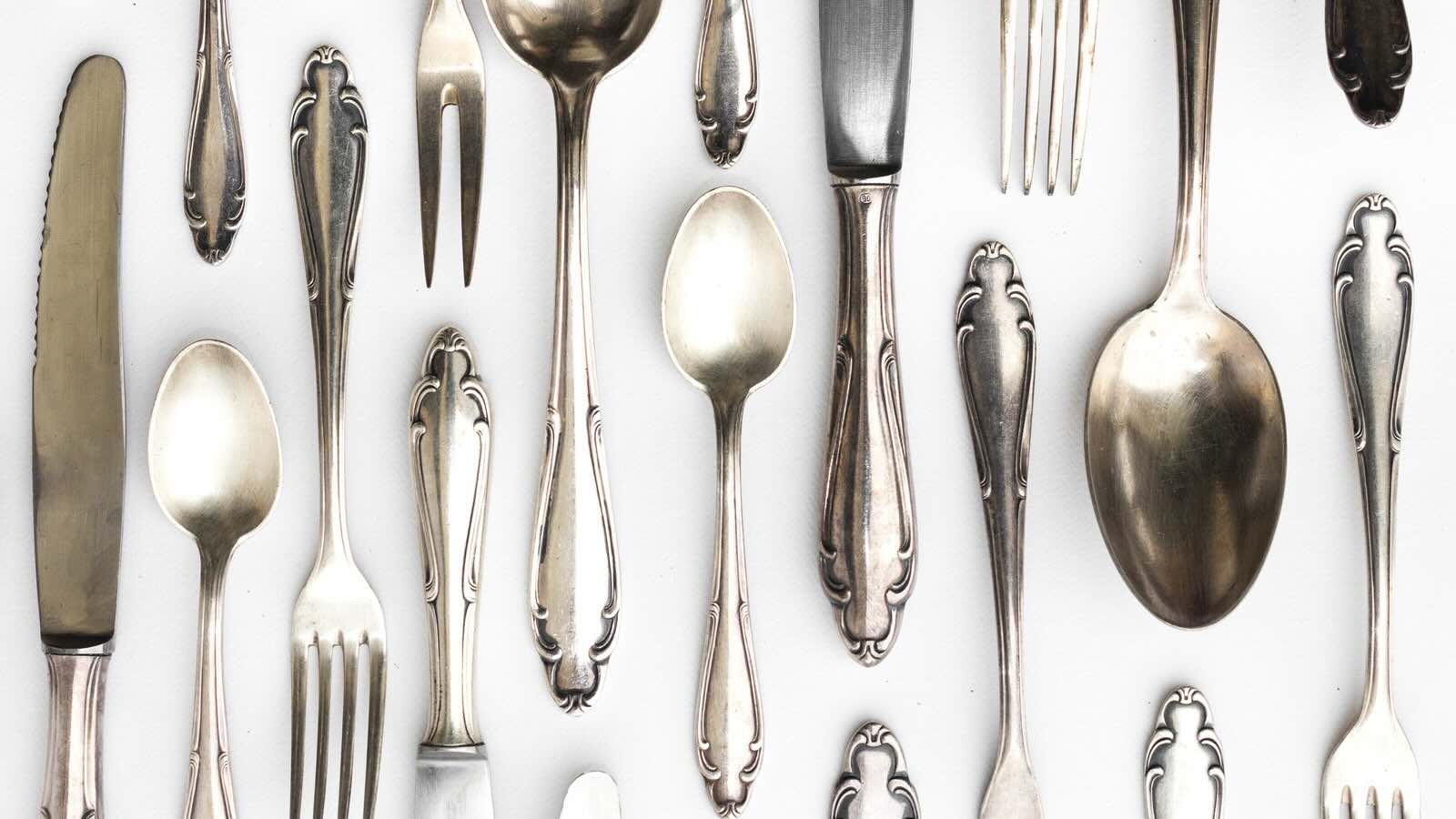
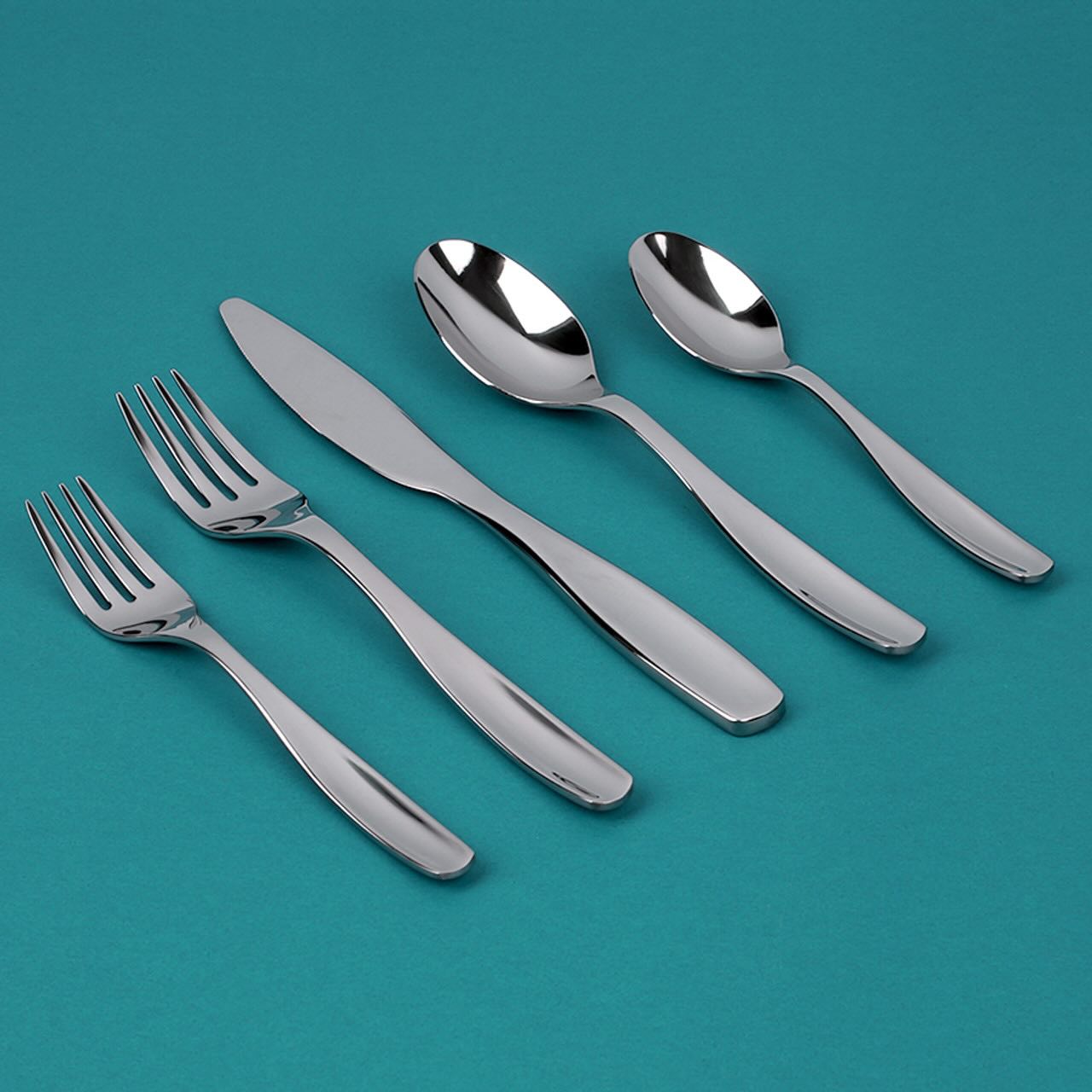

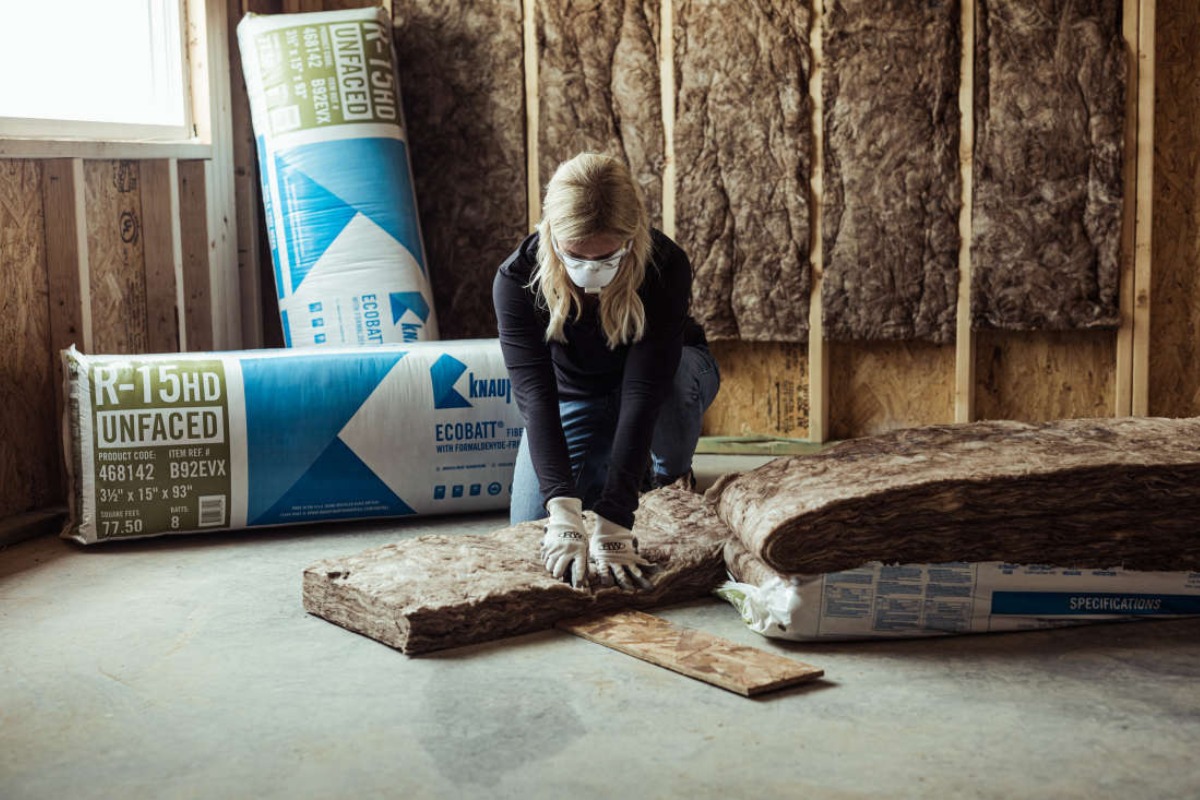
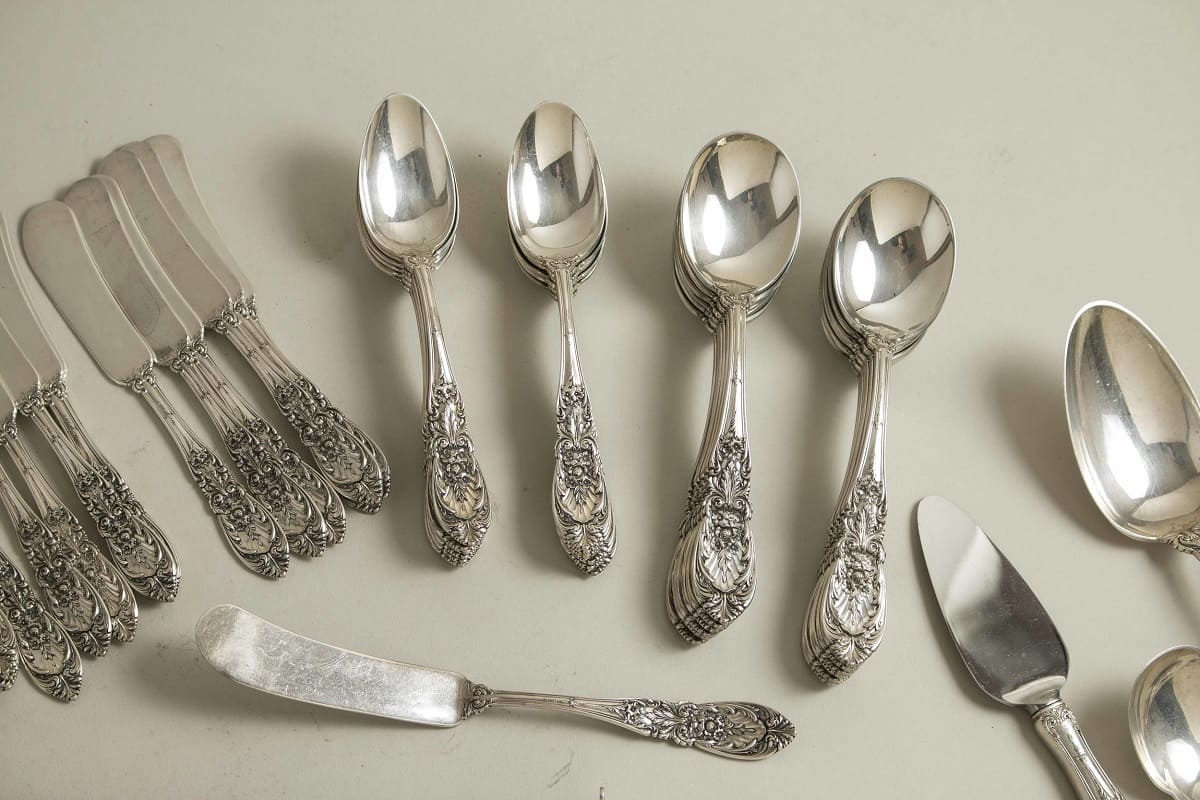
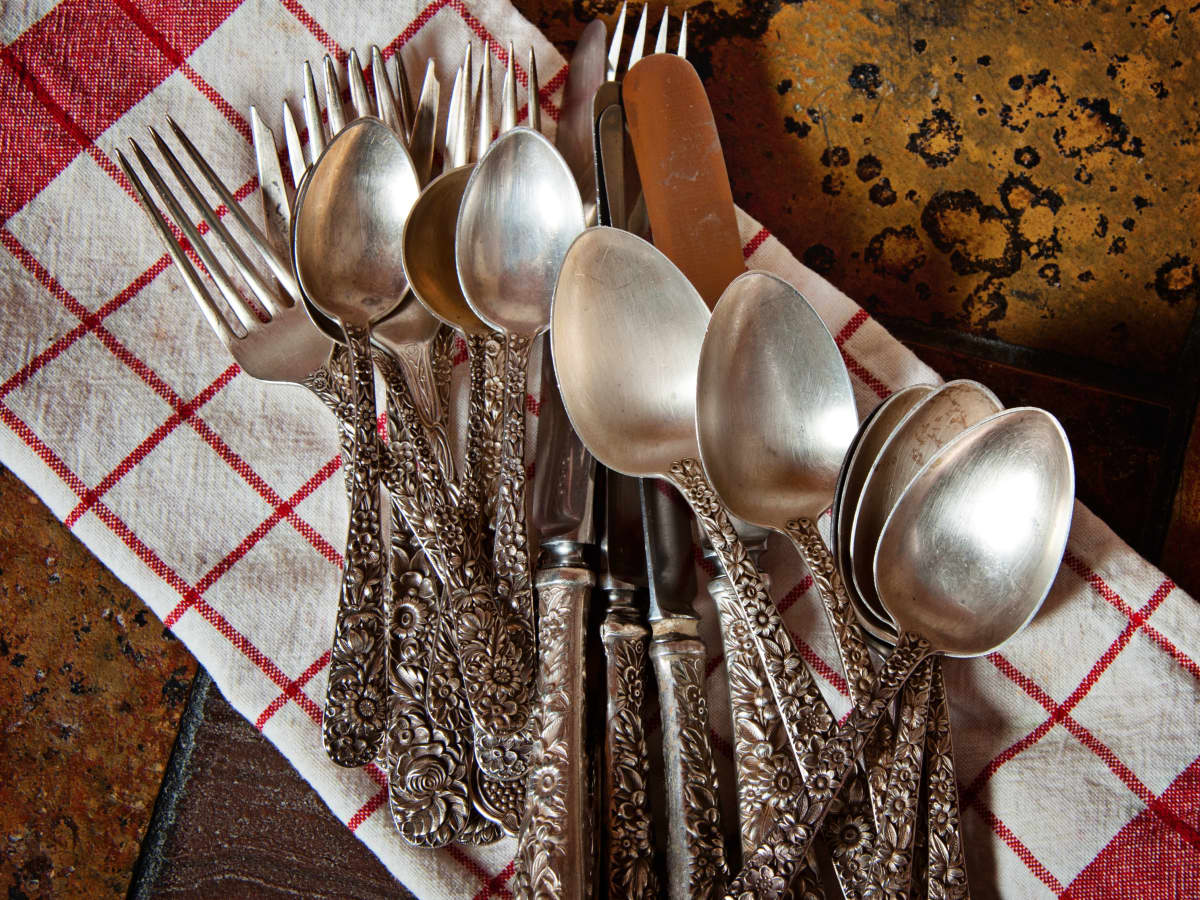

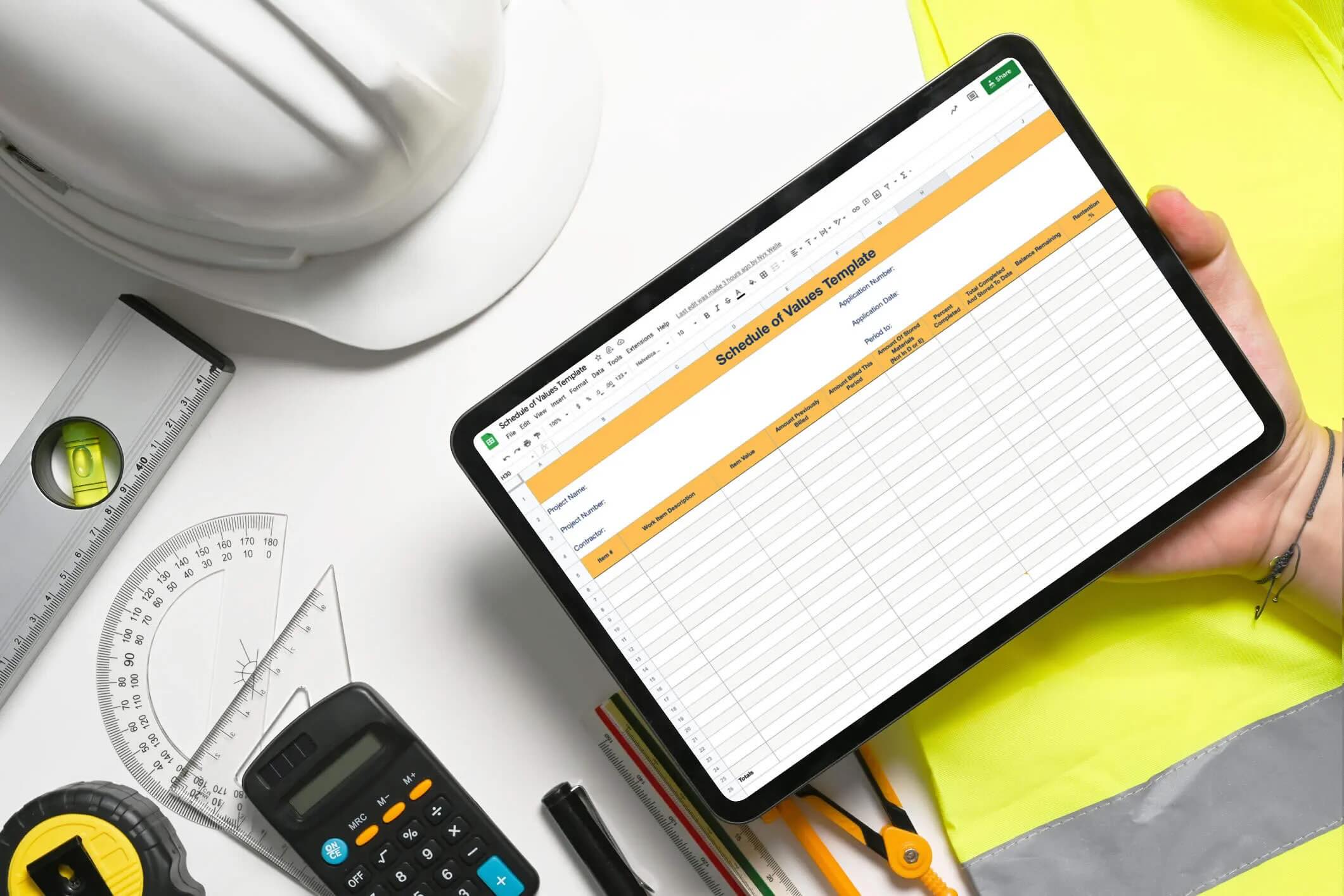
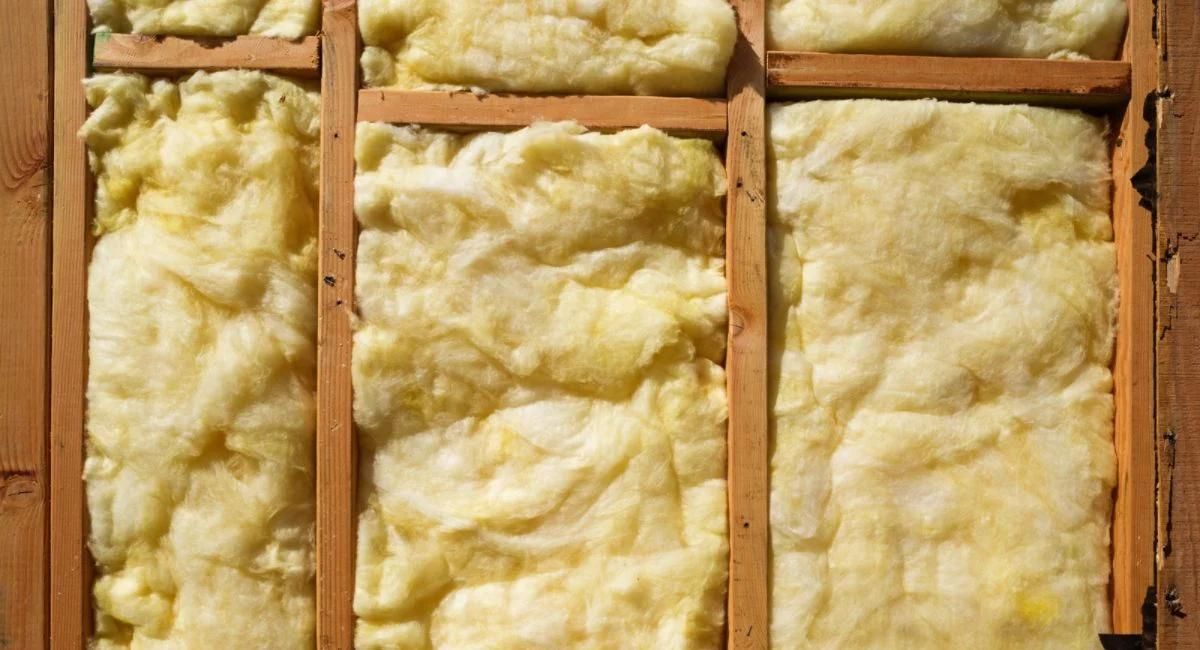
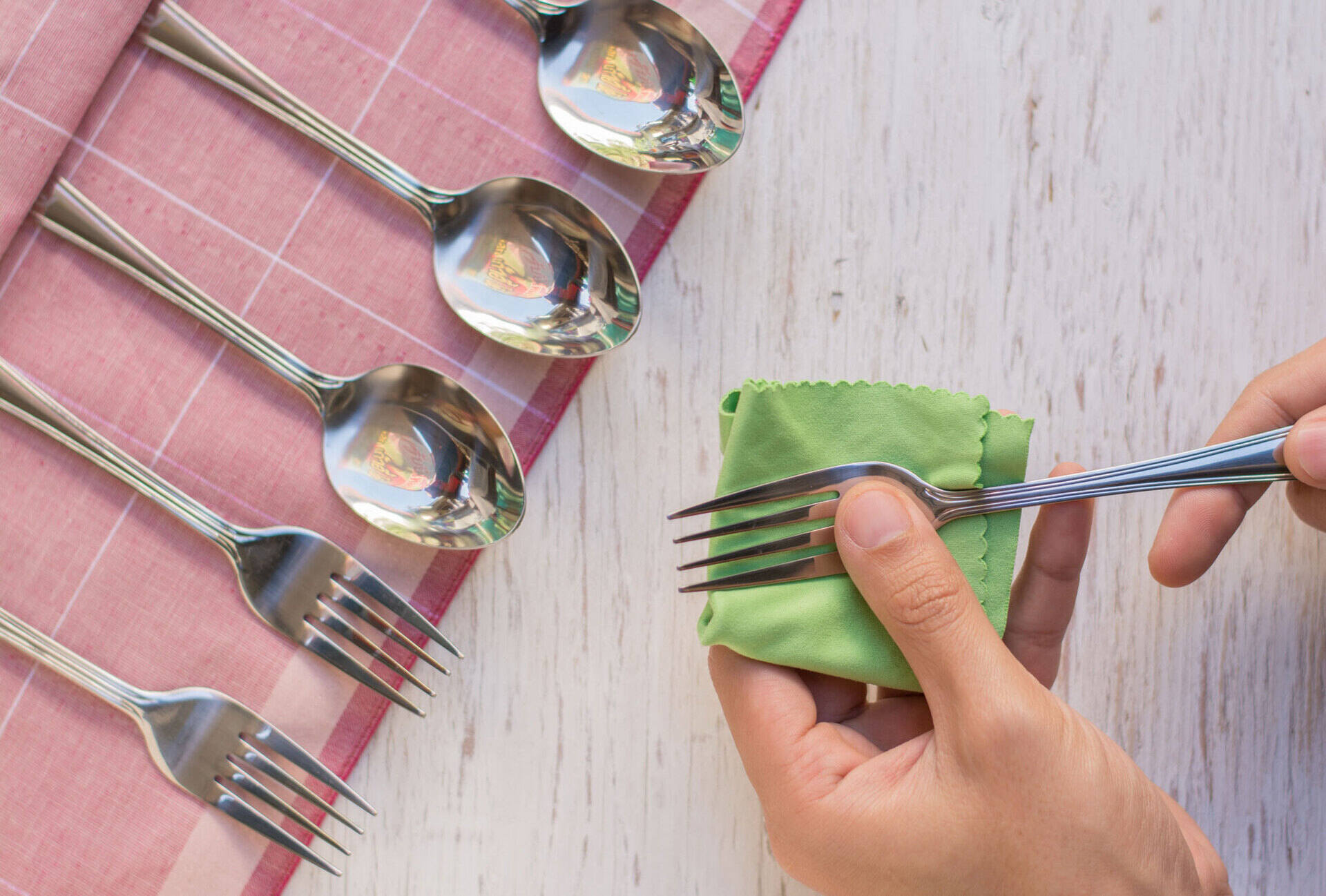
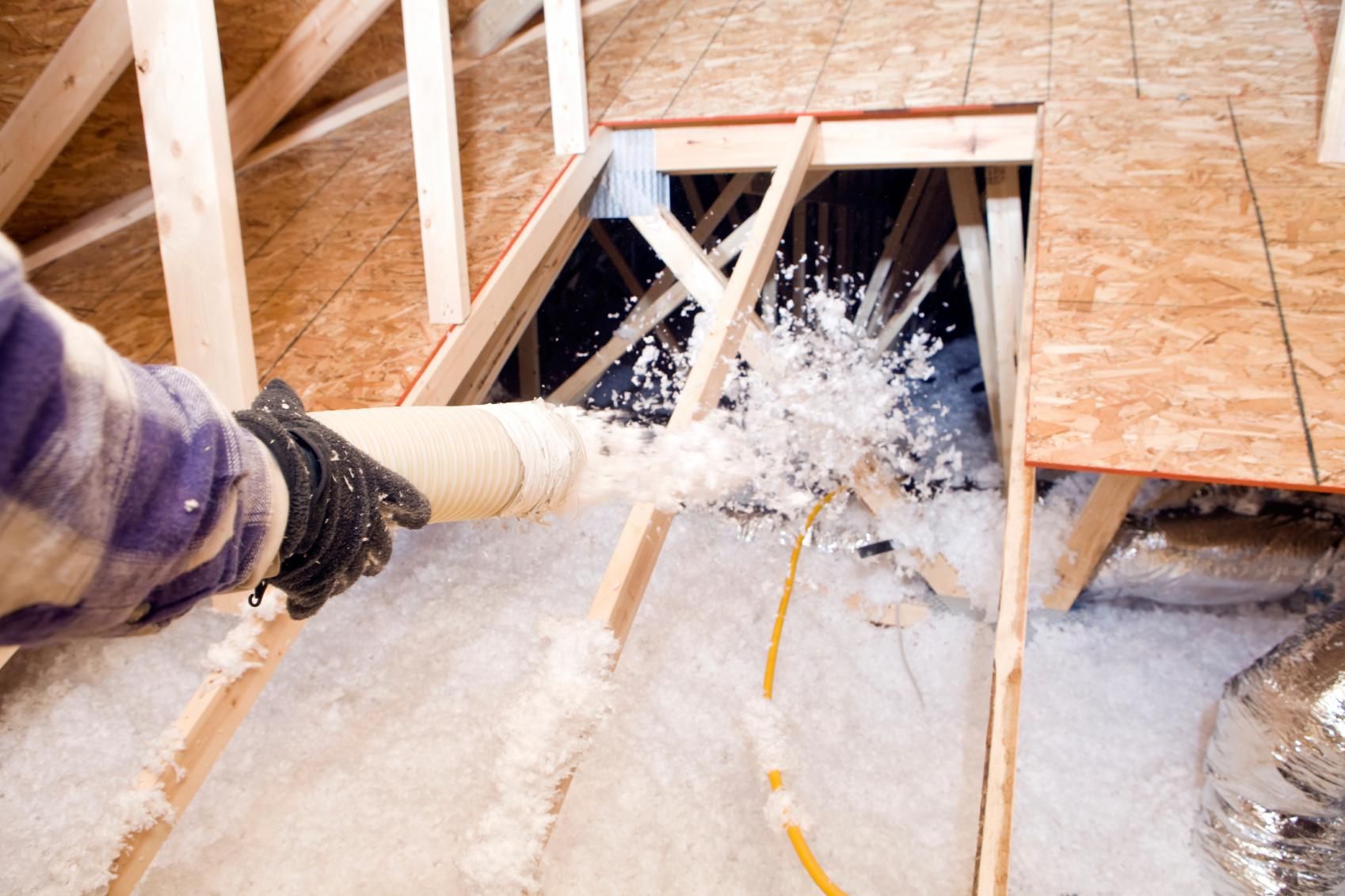



0 thoughts on “What Is The Value Of Sterling Silverware”